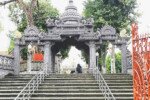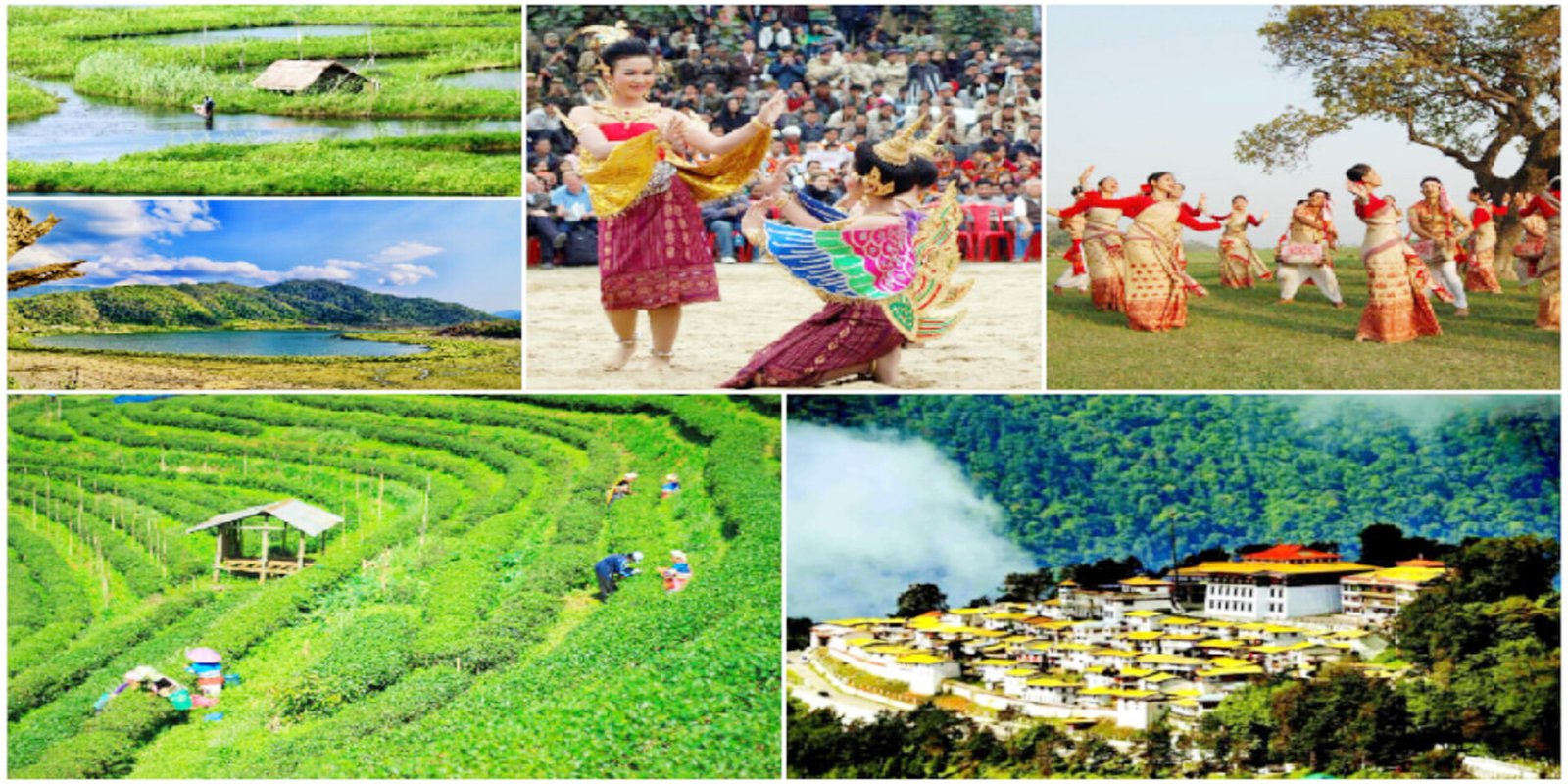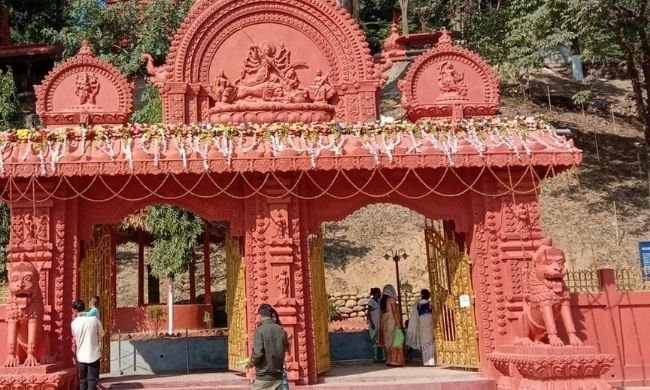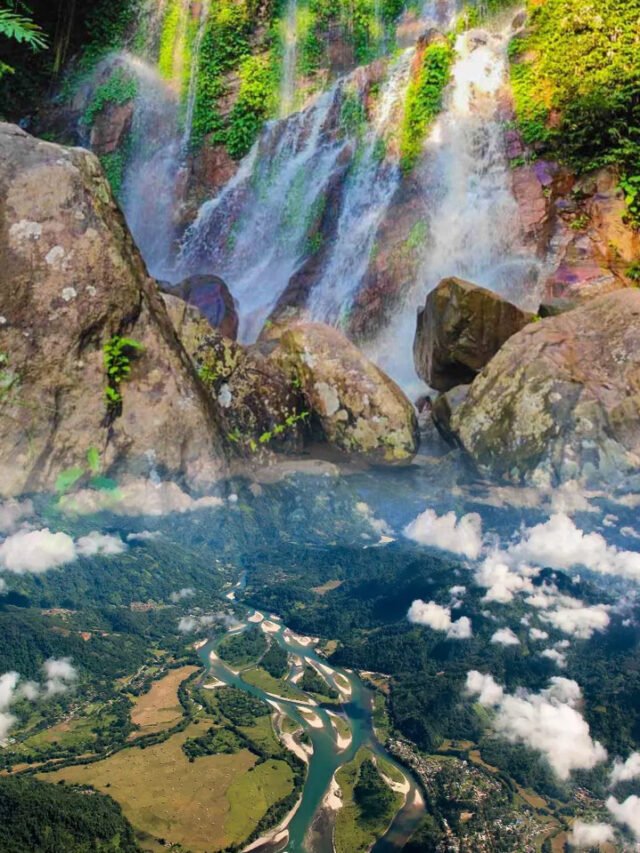By: Sankha Subhra Devbarman
With everything from traditional handicrafts and indigenous brews to an ancient temple shrouded in local folklore, Andro village in Manipur offers an insightful gaze into the state’s rich history.
Tucked away in the forested foothills of the Nongmaiching range, the Andro village is located in the beautiful Imphal district of Manipur, known for its scenic beauty, pleasant climate and warm hospitality. It is around 26 km from Imphal city, and is inhabited by one of the Lois communities of Manipur which many believe were the earliest settlers in this region. The traditional pottery skills of its residents and the glimpses of their legacy depict the rich tribal traditions of the state.
The name of this village is believed to have originated from the word ‘handro’, which, in local terms means ‘the village of the people who returned’. According to local folklore, the earliest settlers of Manipur were driven away by a local ruler. A few centuries later they returned and reclaimed their home which came to be known as Andro village. The eternal fire dedicated to the deity Panam Ningthou was lit by the King Poireiton of the Khuman clan.
From then, Andro village has been developed to represent the cultural heritage and artful creativeness of the Manipuri tribes. The residents are warm, hospitable and skilled in several handicrafts, and are keen on upholding and preserving their slowly-disappearing traditions and customs. This is why in 1993 (under the guidance of noted anthropologist, writer and numismatist Mutua Bahadur) the villagers established a cultural complex-cum-museum that has since become the heart of the village.
Unlike a conventional museum housed in a concrete building, the Mutua Museum (named in honour of its first museum curator) is a constellation of traditionally built, thatched huts that displays a multitude of locally-made handicrafts. This complex encompasses varieties of pottery creations from north eastern India. From pretty paintings and handcrafted tribal dolls to stone figurines and wood carvings of local legends, this museum is a stunning display of Andro’s cultural legacy. The doll house of the complex also has been imaginatively developed by displaying 29 different types of dolls that represent the cross cultural mix of Manipuri tribes across the region.
This village is home to the unique form of pottery, locally known as Charai Taba, practiced only by the married women of Andro and generally passed on to young brides by their mother-in-law. Interestingly, unmarried girls are not allowed to make earthen pots in Andro. Only married women are allowed to take up this craft, that too after they have undergone a traditional ceremony called ‘Thou Chanba’ (that translates to job assigning ceremony). They made varieties of traditional pots namely, Pudond Makhong, Walom, Ngangkha, Yukhum, Wangkham, Kambi, Kambi Makhong Panba and Eshaiphuetc which are very familiar in the region.
What sets the village’s style of pottery apart is the fact that the craftsmen use a uniquely shaped wooden bat to mould the clay instead of a pottery wheel. This flat-surfaced bat is used to deftly pound the clay into a required shape or design. It is then sun-dried for four days before being baked in the fire. The pots are then given a special shine by using a natural dye made from barks of a local tree. Along with pots, the women also make vases, piggy banks and lamps. Other than agriculture, pottery is the main occupation of the villagers who excel at it.
Another interesting fact about the village is the sacred fire, said to be ignited a thousand years ago, in the temple of Panam Ningthou, the governing deity of the village. This is a place the village residents deeply revere and are inherently proud of the ancient temple. Every two household in the village is entrusted with the responsibility of managing the fire for one day. It is then passed on to the next two houses the next day and so on throughout the entire year until each household would have borne the responsibility at least once in a year.
It is believed that this fire has been carefully protected and kept burning since it was introduced to the people of Manipur by Poireiton, the King of the Khuman clan, around 1st century AD. Believed to be the historical turning point for the Manipuri civilisation, this was the time when the nomadic hunters of the region settled down to form well-organised agrarian communities.
Over the centuries, the animist Meiteis of Andro have been using their Charai Taba pots for saving seeds, drinking water, cooking and storing Yu, the local sacred alcoholic rice brew, which is an important part of nearly every ritual, right from the birth ceremony to marriage and death.
Apart from their known tradition of crafting works, this small village has also witnessed a certain level of development in terms of transportation facilities. Travellers can easily avail buses, cycles, auto-rickshaws and taxis to access different locations. The suitable time to visit Andro is from the months of October to February, when the climate is pleasant.
In the recent years, the residents of Andro have woken up to the potential of sustainable tourism. While they are careful about preserving the pristine beauty of their surroundings, they have been working to the boost eco-tourism prospects in and around their village.
The villagers of Andro have built a scenic reservoir at the foothills and established a park around it called the Santhei Nature Park. The park is also known for its natural beauty of the neighbouring gardens historical facts. An orchid farm is also being developed to attract more tourists to this area. The Mutua Cultural Heritage Complex that showcases major tribal traditions and their artifacts is a popular tourist attraction. Model houses of various ethnic tribes, wood carvings, stone monuments and various traditional exhibits can be seen here.
And with the recent developments in the area, the tourist footfall at Andro has gone up significantly, translating into more socio-economic benefits for the locals. Here’s all I can suggest you is that, if you’re looking for a break from the modern and are curious about the past, take a detour to this tiny village of Andro in Manipur and enjoy a life full of art, craft and culture. (The writer is the Regional Director of India Tourism (North East), Ministry of Tourism, Govt of India)












